#béla tarr
Text
FIRST TOTAL SOLAR ECLIPSE


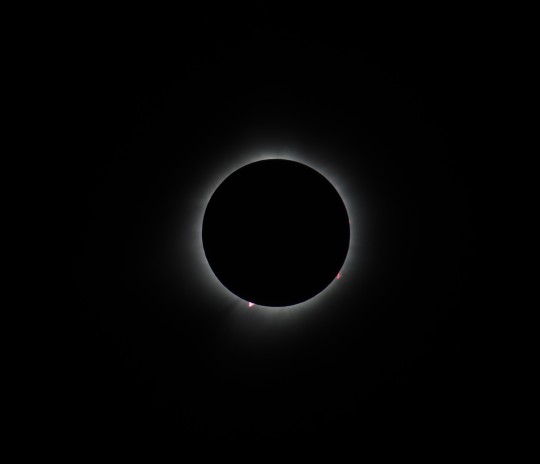
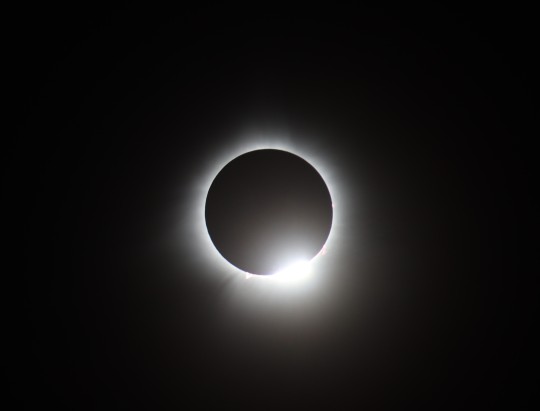
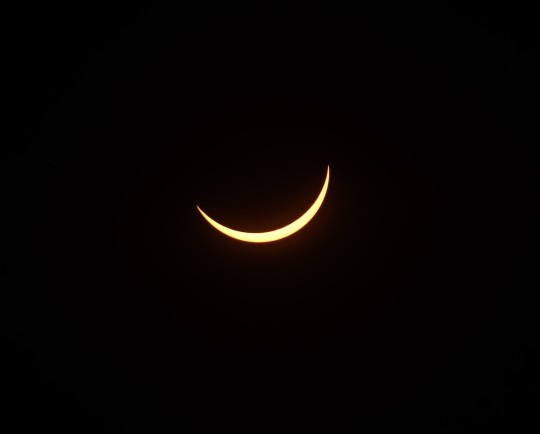
Images from my first total solar eclipse, depicting the outer corona, inner corona, prominent prominences, diamond ring, and the partial phase. Photos taken by Dan.
A black sun. Never had I seen a black sun, that insignia of melancholia that will forever remind me of Kristeva, which will forever remind me of M’s suicide—it was one of the few books M had with her at the very end, the book that her mother believed was the key to why she did it.
Black sun. On the day of—or day after—M’s death anniversary. I had been weeping for days when I found myself beneath that darkening sky.
*
What’s the difference between a partial and a total eclipse? I vaguely remember going onto the playground with some glasses as a child, but I don’t remember what I saw in the sky. What’s the big deal? The sky goes dark for a few minutes. It can’t be much different from the onset of night.
Wrong.
The rhapsodic scientists I listened to on various podcasts convinced me that there is really no comparison between a partial and total eclipse. I tried to hatch a last-minute plan to get myself in the path of totality. In the days leading up to the eclipse, I would be at the French King Bridge for M’s death anniversary. The only person I knew in Western MA, besides M’s mother, was my poet friend Ethan. So I asked him if he had a plan to see the eclipse.
I did not know, when I texted him out of the blue, that his parents lived in the path of totality in northern Vermont, that his father Dan was an astronomer (communist astronomer!) and eclipse chaser (this was his 14th eclipse), that Dan had even organized the local viewing event and wrote a book on the history of astronomy. At Ethan’s parents’ house there were literally photographs of eclipses mixed in with the family photos (see below). His father had even built a little observatory on his land. I had, in the most haphazard fashion, found the perfect guide to my first total solar eclipse.
Dan brought his equipment to the eclipse viewing: cameras, filters, binoculars, and a $4000 hydrogen alpha telescope that we used before the eclipse to look at the sun’s prominences and a sunspot on the surface. He enthusiastically answered all my questions. How had the Babylonians worked it out so long ago? Why does the wind pick up when the eclipse begins? Why is the sun’s corona so much hotter than the sun’s surface? (It’s still a mystery to the scientists…) Why why why. (People often tell me that I always ask a lot of questions—almost like an eternally curious child.)
The eclipse. It is not like the dimming of sunset, with its orange hues and plunge into the horizon, the low angle. It is a light unlike any light I have seen before, a strange dream-like atmosphere, a gray yet shimmering unreality, the air suddenly cold, the birds in a confused tumult. The uneven temperature of the atmosphere makes the wind pick up as the moon slowly covers the sun. Though the light was not the gold of sunset, you could see a band of orange on every horizon like a 360 degree sunset, an eerie gloaming that electrifies your skin.
A silence descended on the field as the moment of totality approached. Then, audible gasps—we couldn’t believe what we were seeing. I think the first thing I said was, “Holy. Shit.” Nothing prepared me for the numinous beauty of the sun’s corona, those elegant wisps of bright white light haloing the black sun. I think it’s probably the closest one can come to seeing God while alive on this earth. I cried during totality while observing the patterns in the corona through binoculars. A beautiful pink arch of plasma (a prominence) was visible toward the bottom of the sun. Dan pointed out Venus in the sky.
In the center of that black hole
there is an abyssal silence
I don’t know how to describe it. Celestial indifference to human endeavor, human emotion. A kind of coldness in that heat, the heat of the corona, beyond even the fires of Hell. Then I can hear the angelic squall of the corona ringing over the landscape. It is a sound full of grace even as it cannot be called happy.
I can see why the ancients might interpret an eclipse as an augur of something deeply ominous, perhaps apocalyptic. The experience is, at once, sublime, ecstatic, and deeply unnerving—all your perceptual faculties are telling you that something is wrong. The ongoingness of the world and its rules cannot be taken for granted, for the sun went black, not in my dream, but in the afternoon sky.
And just as soon as it began, it was over. We had almost 3 and half minutes of totality. I was surprised by how quickly the sky brightened, how much light we get when the sun is almost completely covered.
One day the moon will float away. There won’t be any more total solar eclipses. Be grateful you were alive during this slice of cosmic time.
youtube
This is my favorite scene in all of cinema, from Béla Tarr's Werckmeister Harmonies. Watch drunkards reenact an eclipse in a drab Hungarian bar...

Ethan and communist astronomer dad!
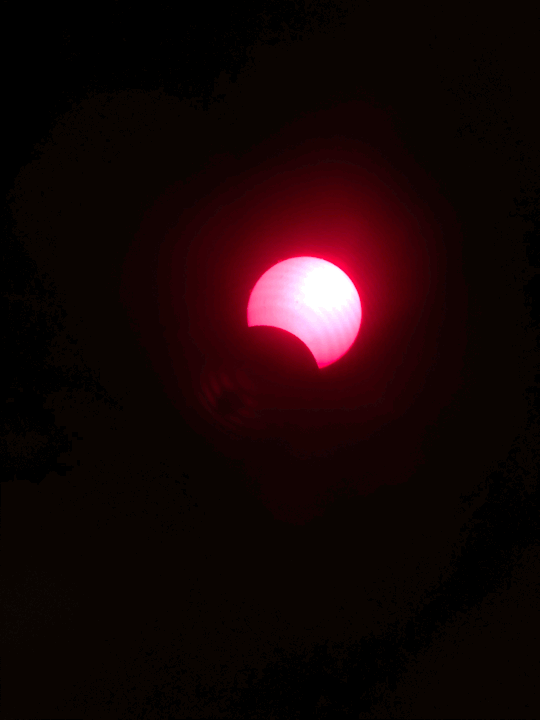


I even got eclipse-branded maple syrup (peak Vermont)

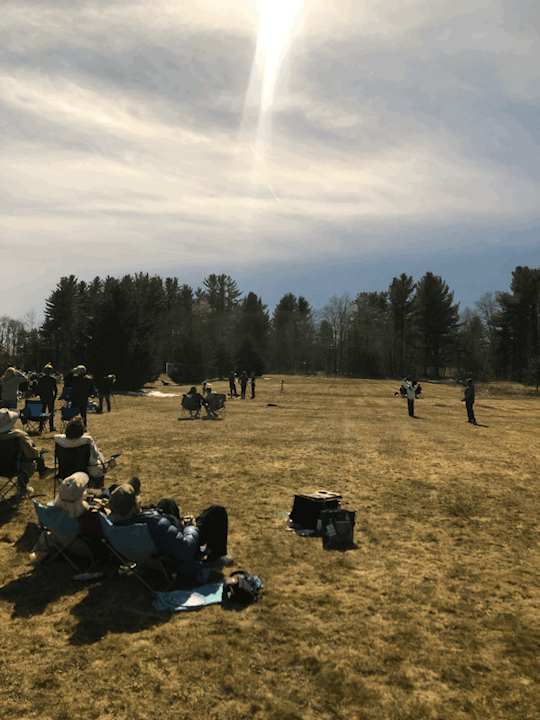

#eclipse2024#eclipse#total solar eclipse#solar eclipse#Werckmeister Harmonies#film#bela tarr#great american eclipse#béla tarr
36 notes
·
View notes
Photo

Kárhozat (1988) dir. Béla Tarr
129 notes
·
View notes
Text
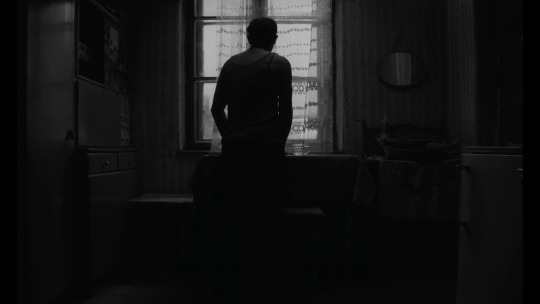

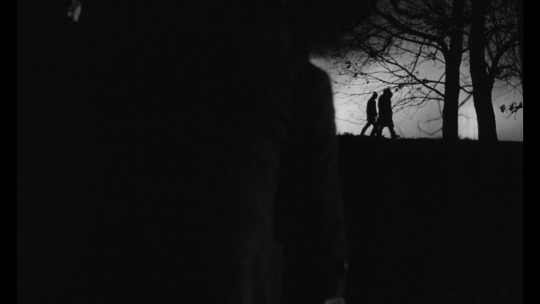



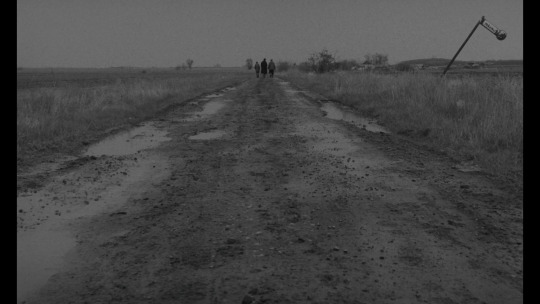
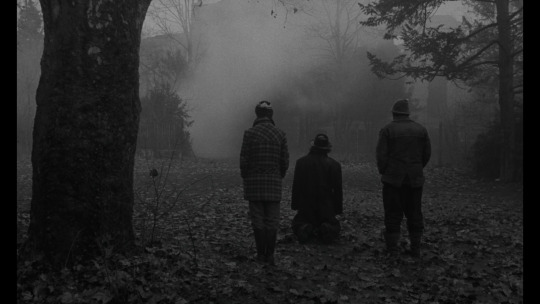
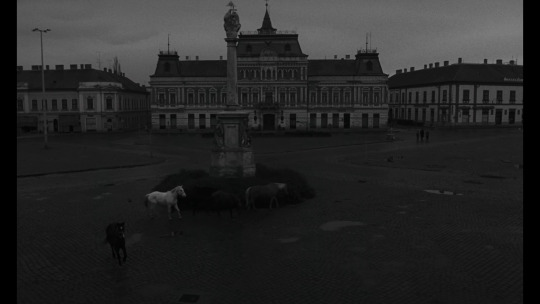
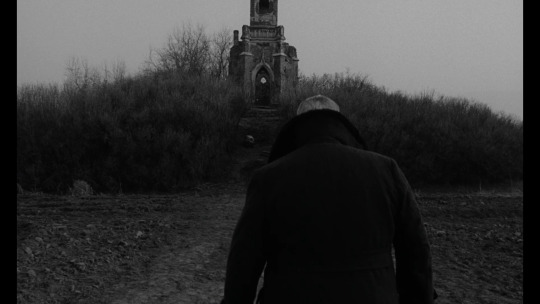
Sátántangó (1994)
Country: Hungary / Germany / Switzerland
Directed by: Béla Tarr
Cinematography by: Gábor Medvigy
#Satantango#Béla Tarr#Gábor Medvigy#Hungary#Germany#Switzerland#Arthouse#Existential#Surreal#Crime Drama#1990s
23 notes
·
View notes
Text

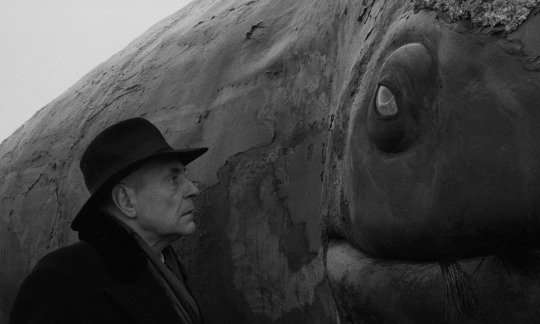

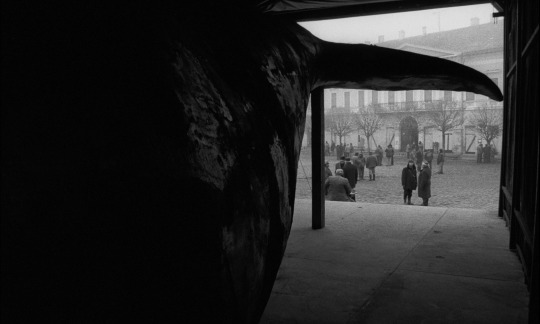
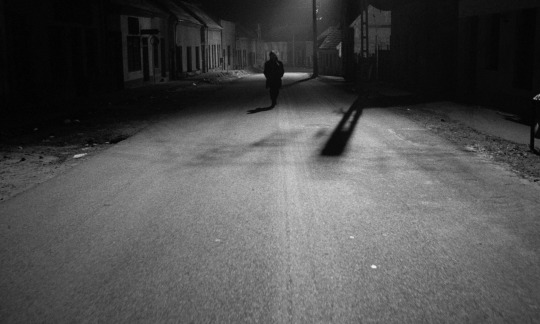


Werckmeister harmóniák / Les Harmonies Werckmeister (dir. Béla Tarr, 2000)
#werckmeister harmóniák#werckmeister harmonies#harmonies werckmeister#béla tarr#tarr#black and white#slow cinema#cinema#cinematography#film#film stills
14 notes
·
View notes
Text

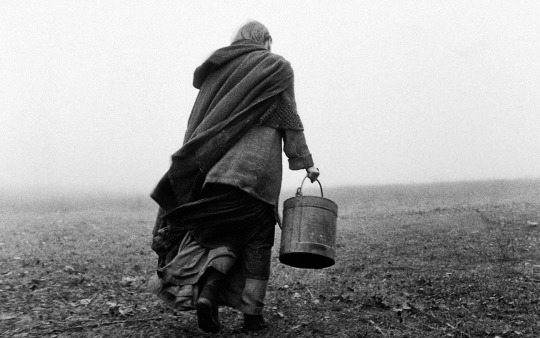
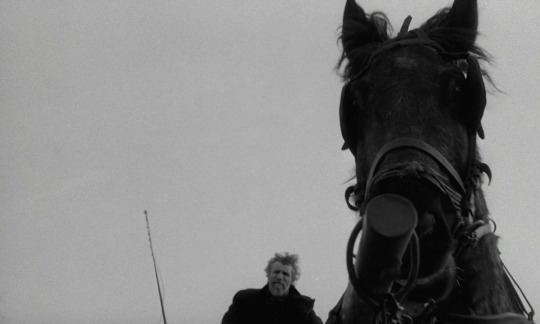
'A Torino, il 3 gennaio 1889, Friedrich Nietzsche esce dalla porta del numero 6 di via Carlo Alberto, forse per fare due passi, forse per andare all'ufficio postale a ritirare la sua corrispondenza. Non lontano da lui, o in verità molto distante da lui, un cocchiere sta avendo difficoltà con il suo cavallo testardo. Nonostante le sue sollecitazioni, il cavallo rifiuta di muoversi. Al che il cocchiere - Giuseppe? Carlo? Ettore? - perde la pazienza e lo prende a frustate. Nietzsche raggiunge la folla e ciò mette fine alla brutale scena del cocchiere, che a quel punto sta schiumando di rabbia. Il robusto e assai baffuto Nietzsche salta all’improvviso verso la carrozza e getta le braccia attorno al collo del cavallo, singhiozzando. Il suo vicino lo porta in casa dove egli giace immobile, in silenzio, per due giorni su un divano finché non mormora le ultime definitive parole: "Mutter, ich bin dumm." - "Madre, sono pazzo."
E vive per altri dieci anni, mansueto e demente, tra le cure della madre e delle sorelle.
Del cavallo... non sappiamo nulla.'
Il cavallo di Torino (A torinói ló 2011) Béla Tarr
15 notes
·
View notes
Photo
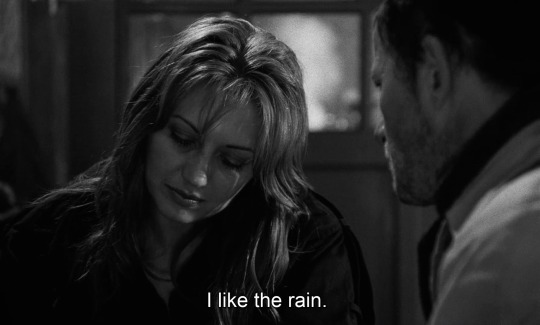




Kárhozat / Damnation | Béla Tarr | 1988
66 notes
·
View notes
Text

Damnation (1988) - dir. Béla Tarr
11 notes
·
View notes
Text

Happy 68th, Béla Tarr.
17 notes
·
View notes
Photo

Hungarian filmmaker Béla Tarr posing with pirated DVDs of his own movies in Peru.
73 notes
·
View notes
Text
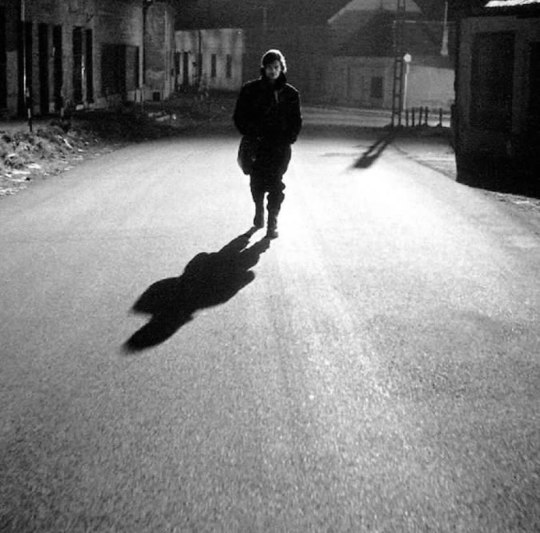
"Lo único que os pido es que caminéis conmigo por la inmensidad en que la constancia, la quietud y la paz, reinan en un vacío infinito".
Armonías de Werckmeister, Béla Tarr, 2000
2 notes
·
View notes
Text
Sátántangó // dead girls // insomnia // etc
There are many things I’ve been wanting to write about—Sátántangó (spoilers below), oceanic primitive accumulation (fuck you Norway), the ontology of Ibn ‘Arabi, Susan Taubes + Susan Sontag as doubles/rivals, Robert Hurley’s event (a hymn to every saint who has ended up in the asylum), my sleepless visions. (I saw the white door of the world open, and squatting at the entrance staring back at me was my dead dog Lucky, as a puppy—everything I love vanished as it passed through the doorway of my mind’s eye, until I too passed through that dimensionless portal, like the thread of the self entering the eye of eternity’s needle, entering…and disappearing. “It was a white space and in it I did not know who I was,” I wrote in my journal long ago. Recursive time: over a decade ago I was reading Simone Weil and thinking about the transmogrification of suffering into grace.)
I want to write about Estike dying a beautiful death, with its “unutterably beautiful logic,” a death of connection, the girl of the gutter expiring in the ruins of a church. “‘Yes,’ she quietly repeated to herself, “the angels see this and understand it.’” I wanted to write about the chain of abuse, what people do to those they have power over, how the abused become petty tyrants, disgusted by the weakness of those without defense, those one rung below them on the ladder. I will do to you what has been done to me. So the damned girl Estike tells her cat: “I’m stronger than you.” O how much her sadism toward the weak creature reminded me of my dead ex girlfriend’s spiteful cruelty. The way Estike shoved her cat’s head into the poison milk reminded me of the way M violently shoved her fingers into my mouth while shouting, “There, there—is that what you want!” (I had gotten upset when she told me about how she would suck her ex-girlfriend’s fake cock while performing in her noise band. How M delighted in humiliating me, in humiliating others.)

I see Estike observing the community of humans from outside—is it a gaze of indifference, yearning, or misanthropy?—as she stares at the drunken revelers through the window. That partitioning, too, between the outcast and the in-cast, reminded me of M. Did she ever watch Sátántangó before she died? She would often talk about wanting to watch it. We believed… there was so much time to watch it. One day…until our days are over. Evocation of the bells, a perfect vision of authority’s darkness.
Why kill the one you love? I wrote in my notebook.
During the film I remembered… the voice of entreaty, the voice of prayer—that cry from the heart when, 11 years ago, I asked God: Will I ever see her again? No, I did not see her. Had I received the answer then—the brutal monosyllabism of an unqualified No—I would have been inconsolable.

(Once I saw someone on a bus in Boston I thought might be her, someone wearing rainbow leggings—it must have been a ghost.)
When asked about the influence of Tarkovsky on his work, Béla Tarr said, “You want to know the difference between me and Tarkovsky? I don’t believe in God.” Béla Tarr does have a way of profanizing—of lampooning—every gesture toward the mystical. The bells that woke Futaki? The doctor notes: they could not have come from the chapel, the tower having collapsed during the war. Infernal tolling, belfry of the tortured imagination! Subversion of Tarkovsky’s sublime bell motif: in a Godless world, the tolling that the townspeople all hear coming from the ruins of the chapel is just a madman clanking and hollering about the coming of the Turks. When Irimiás hears the drone and falls to his knees before the ruins where Estike has killed herself, his sidekick Petrina asks, “What, you’ve never seen fog before?” (Reverence is always slapped down with irreverence.)
*
In the early morning
through the jasmine gate
the jacaranda weeps violetly
(because colors should be adverbs…)
In the late-day setting sun
annunciation of the light-limned lily
crooning the voice of Daniel Johnston
cracking with the true love he wants to find him
(The light the light the light…)
I wanted to write all of it—but I’m operating at about 5% of my cognitive capacity, on almost no sleep for weeks, waiting for the mercy of a wished-for neurochemical leveling. It’s hard to write in this haze. I can’t tell you how much I miss writing myself into a state of ecstasy. But now there’s just the state of the dysregulation of the serotonin and noradrenergic systems, paresthesia migrating across my face as I wonder—will I be strong enough to bear it, to face who I am without pharmacological appendage?
youtube
Pray I will one day be able to sleep as soundly as this baritone ginger dreaming of the dog contemplating the freedom of the birds. The dreamers soaring above the broken Earth, watching the planet die. “Baby this faith is all I have…this faith is all I have.”
15 notes
·
View notes
Photo

A torinói ló (2011)
Directed by Béla Tarr
Cinematography by Fred Kelemen
19 notes
·
View notes
Text

“Tarkovski era religioso, creía en dios. En su cine, cuando llueve nos purificamos. Mi lluvia sólo da barro y dificulta el paso”.
Béla Tarr
Por Andrés Casciani
Sanguina y tiza pastel sobre papel – 27 x 37 cms (2024)
*Obra disponible: compras y consultas por mensaje privado o al mail [email protected]
andrescasciani.com
2 notes
·
View notes
Text
COLM TÓIBÍN
Restlessness: A Syllabus
I am interested in texts that are pure voice or deal with difficult experience using a tone that does not offer relief or stop for comfort. Sometimes, the power in the text comes from powerlessness, whether personal or political. Sometimes, death is close or danger beckons or violence is threatened or enacted. Sometimes, there is a sense of real personal risk in the text’s revelations. Sometimes, there is little left to lose. All the time, the tone is incantatory or staccato or filled with melancholy recognitions.
Euripides, Medea
Sophocles, Electra
Sophocles, Antigone
Sylvia Plath, Ariel
Louise Glück, The Wild Iris
Anne Carson, Autobiography of Red
Juan Goytisolo, Forbidden Territory
Joan Didion, A Book of Common Prayer
Oscar Wilde, De Profundis
Nadine Gordimer, The Late Bourgeois World
Ingmar Bergman, Autumn Sonata
John McGahern, The Barracks
Béla Tarr and Ágnes Hranitzky, The Turin Horse
Doris Lessing, The Grass Is Singing
J. M. Coetzee, Age of Iron
Béla Bartók, Bluebeard’s Castle
Constance Debré, Love Me Tender
4 notes
·
View notes
Text
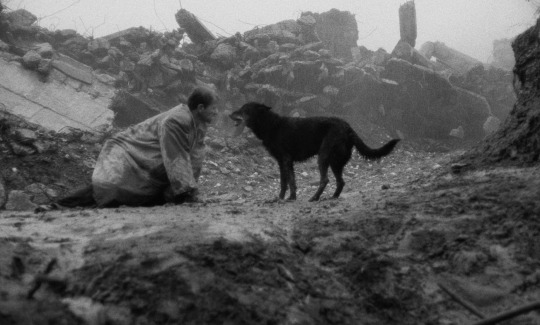
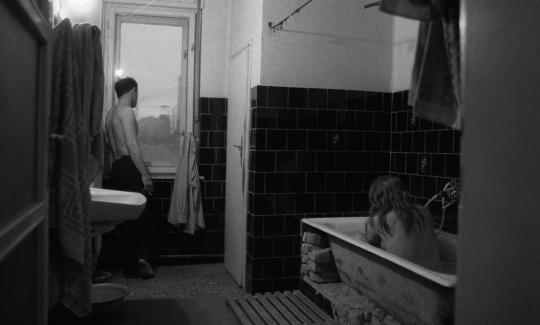

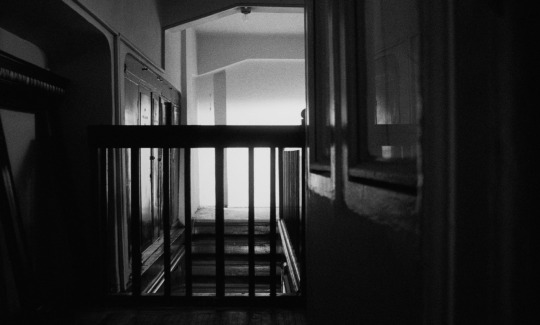


Kárhozat / Damnation (dir. Béla Tarr, 1988)
#kárhozat#damnation#béla tarr#tarr#black and white#cinematography#slow cinema#film#cinema#film stills
24 notes
·
View notes
Text
"Satántángò" é um filme icônico do renomado diretor húngaro Béla Tarr, lançado em 1994. O filme é uma obra-prima do cinema de arte, conhecido por sua abordagem lenta e contemplativa, além de suas imagens em preto e branco, que criam uma atmosfera única.
A história se passa em uma vila isolada na Hungria, onde um grupo de personagens complexos e perturbados vive em condições miseráveis. A narrativa se desenrola ao longo de sete horas, divididas em capítulos, o que permite aprofundar-se nos dilemas e anseios de cada indivíduo.
A direção magistral de Tarr combina longos planos sequência com uma fotografia impecável, capturando a melancolia e a desolação do cenário rural. A trama mergulha nos aspectos mais sombrios da condição humana, explorando temas como a ganância, a decadência moral e a busca pela redenção.
Embora a duração do filme possa ser um desafio para alguns espectadores, a jornada é recompensadora para aqueles que se entregam à experiência. "Satántángò" é um trabalho cinematográfico provocativo e reflexivo, que permanece com o público muito tempo após o término da exibição, revelando-se como uma meditação profunda sobre a natureza humana e suas complexidades.
O filme contém uma rica filosofia implícita em sua narrativa e abordagem cinematográfica. Através de sua atmosfera sombria e contemplativa, o diretor Béla Tarr explora questões filosóficas profundas e existenciais.
Uma das principais filosofias presentes no filme é a visão sobre a condição humana. Tarr retrata a vida dos personagens na vila como um retrato desolador da existência humana, mergulhando nas camadas mais obscuras da psique humana. O tédio, a ganância, a decadência moral e a busca por significado são temas recorrentes que questionam a natureza do ser humano e sua relação com a sociedade e o ambiente ao seu redor.
Outro aspecto filosófico proeminente é a noção de tempo. A narrativa lenta e a divisão do filme em capítulos que se estendem ao longo de sete horas destacam a importância do tempo como um elemento central da experiência humana. Tarr nos convida a refletir sobre a passagem do tempo, a rotina e a monotonia, bem como a transitoriedade da vida.
A abordagem visual em preto e branco também contribui para a filosofia do filme, transmitindo uma sensação atemporal e universal. A ausência de cor reforça a ideia de que as questões exploradas transcendem contextos específicos e ressoam com aspectos mais universais da humanidade.
Além disso, "Satántángò" apresenta uma crítica social aguda sobre a desigualdade e a exploração, mostrando a situação miserável dos personagens como um reflexo das estruturas de poder e opressão presentes na sociedade.
É uma obra que convida o espectador a uma reflexão filosófica profunda sobre a natureza humana, o tempo, a condição social e a busca por significado. É uma experiência cinematográfica única que transcende os limites da narrativa convencional e ressoa como uma meditação existencial sobre a vida e seus mistérios.


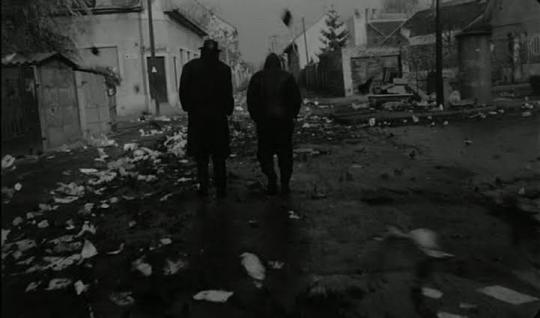
3 notes
·
View notes